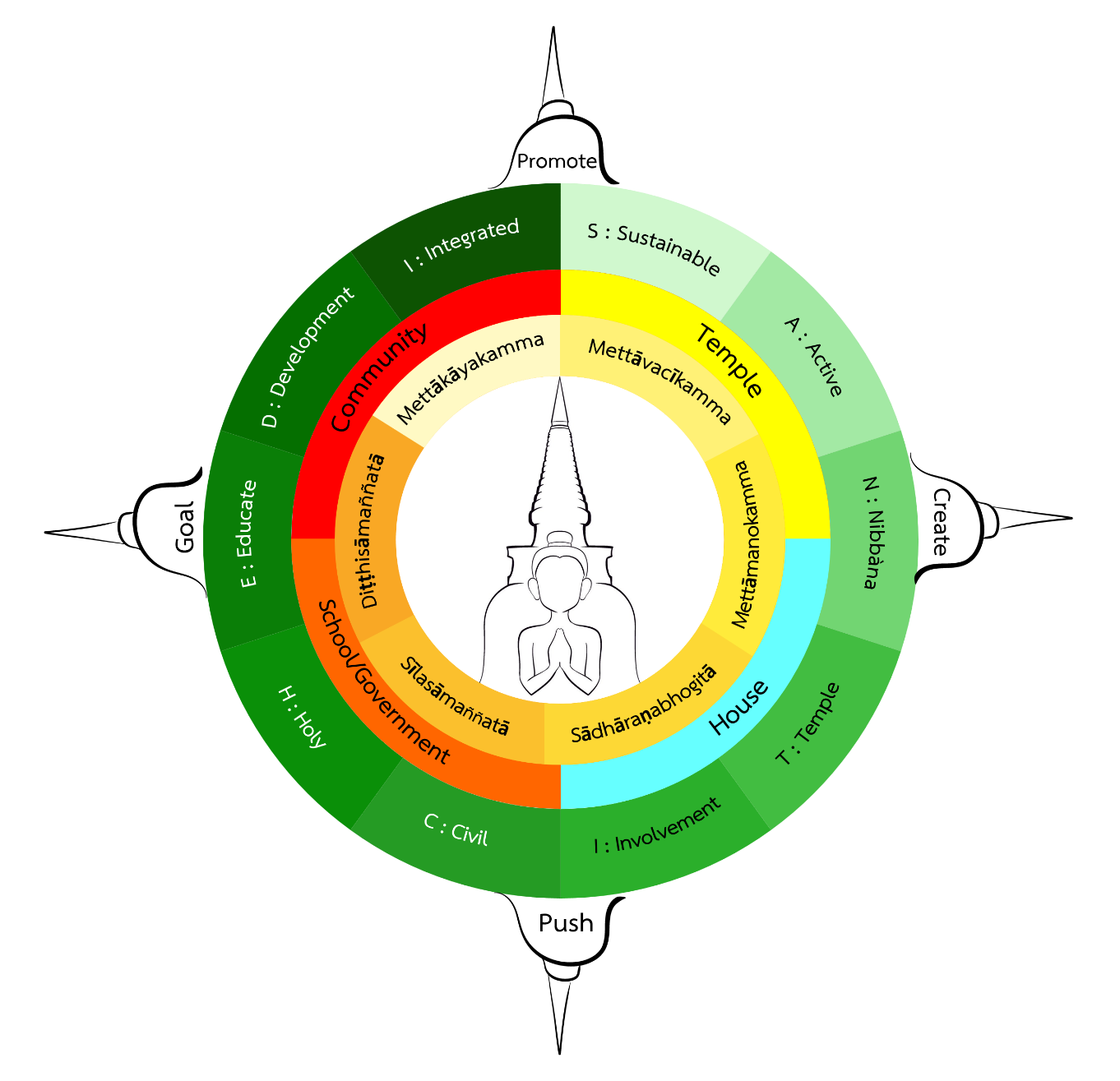A COMMUNITY ADMINISTRATION AND MANAGEMENT FOR CREATING PEACHEFUL COMMUNITY ACCORDING TO BUDDHIST PEACHEFUL MEANS: ANALYTICAL STUDY OF WAT CHEDI, CHALONG SUB-DISTRICT, SICHON DISDRICT, NAKHON SI THAMMARAT PROVINCE
Keywords:
Management, Peaceful Community, Buddhist PeaceAbstract
Background and Objectives: All communities require peaceful cohabitation with harmony, freedom, justice, and the absence of conflict. Therefore, the community management of Wat Chedi must consist of a systematic plan for community development to ensure sustainability and peace. The purposes of this study consist of analyzing the Buddhist methods of peace (Buddhist Peaceful Way) that could support management practices for creating a peaceful community and developing and presenting management approaches based on Buddhist Peaceful Ways at Wat Chedi, located in Chalong Subdistrict, Sichon District, Nakhon Si Thammarat Province.
Methodology: This research was an action research study. The key informants were selected through a purposeful sampling method, consisting of 28 individuals who were involved and experienced in related areas, including monks, community leaders, village heads, and local residents. In-depth interviews were conducted with these individuals, as well as with nine experts in Buddhist teachings, management, and community development, who participated in group discussions and peace dialogues. The data were analyzed and described qualitatively.
Main Results: The application of the Six Principles of Harmony (Sārānīya-Dhamma) served as the foundation for managing and creating a peaceful community through Buddhist Peaceful Ways at Wat Chedi. This approach encompassed four contexts: 1) The Temple-utilizing the principles of loving-kindness in body, speech, and mind, which fostered good communication and mutual respect in the community; 2) The Home-applying the principle of public welfare, which ensured the stability of the foundation for sharing knowledge in community development; 3) School/ Government-adhering to the principle of communal discipline, establishing rules for living together and respecting the regulations in place; and 4) The Community-employing the principle of shared viewpoints, encouraging the exchange of thoughts and experiences to find solutions for community development and creating a peaceful society based on the strength of the community's beliefs, particularly the faith in "Ai Khai" (A local spiritual figure), through promoting and supporting efforts towards the common goal. This led to the realization of a peaceful community where people followed the principles of living together harmoniously, creating jobs, studying together, having a common purpose, sharing with each other, and bringing happiness, peace, and tranquility to the community, with the temple serving as a central support point.
Involvement to Buddhadhamma: The management practices for creating a peaceful community at Wat Chedi are based on Buddhist teachings, particularly the Six Principles of Harmony, to facilitate community management. The temple serves as a central driver of the community through the power of the Triple Gem (Buddha, Dharma, Sangha). The true happiness of any community is achieved through peace, living harmoniously, and helping one another in all aspects, guided by Buddhist principles.
Conclusions: The management practices for creating a peaceful community at Wat Chedi, guided by the Six Principles of Harmony, have fostered a peaceful society through the SANTI-CHEDI Model. This model connects the temple, the Buddhist community, the government, the village, and local residents, creating activities that promote peace and community development. As the Buddha taught, Nirvana is the ultimate happiness, meaning the cessation of suffering and the purification from defilements. When this peace is realized, it can be considered as the attainment of Nirvana.
References
Department of Religious Affairs, Ministry of Culture. (2016). Model Development: Driving the Community of Virtue with the Power of "BORWOR". Bangkok, Thailand: Religious Affairs Publishing House.
Department of Religious Affairs, Ministry of Culture. (2018). Operating the Community of Virtue Driven by the Power of BORWOR. Bangkok, Thailand: Aksorntai Publishing House.
Gandhi, M. (1985). The Answer to the Village, Rossana Kositrakul. (2nd ed.). Bangkok, Thailand: Komolkeemthong Foundation.
Kamales, N. & Knorr, H. (2019). Leaders with Managing Cultural Diversity and Communication. Asia Pacific Journal of Religions and Cultures, 3(1), 63-72.
Mahachulalongkornrajavidyalaya University. (1996). Thai Tripitaka. Bangkok, Thailand: MCU Press.
Phra Phaisan Visalo. (2007). Making Peace with Our Hands: A Nonviolent Action Manual for Practitioners. Nakhon Pathom, Thailand: Center for Peace and Conflict Studies, Mahidol University.
Phrakrupalad Adisak Vajirapañño, Phrakrupalad Pannavoravat & Satiman, U. (2024). A Model of Temple Development as a Spiritual Center of Urban Communities under the Noble Triumvirate of Home, Temple and School (Borworn) Framework: A Case Study of Wat Sarod Community, Bangkok. The Journal of Research and Academics, 7(4), 49-64.
Phrasamu Winyu Pooripanyo & Phra Rajpariyattikavi. (2020). A Model for the Development of Village, Monastery and School for Promoting Peaceful Community: A Case Study of Village, Monastery and School in Bang Kho Laem District, Bangkok. Journal of MCU Peace Studies, 8(3), 941-952.
Ruangmark, A. (2016). Sacred Temple Boy: Aikai Wat Jedi. Walailak Abode of Culture Journal, 16(1), 29-54.
Wattanapradith, K. (2018). Peace Community in the 26Th Buddhist Century: Knowledge Learned from Peace Community in Conflict Areas. Journal of MCU Peace Studies, 6(Special issue 1), 13-24.

Downloads
Published
How to Cite
Issue
Section
License
Copyright (c) 2024 Journal of Buddhist Anthropology

This work is licensed under a Creative Commons Attribution-NonCommercial-NoDerivatives 4.0 International License.







